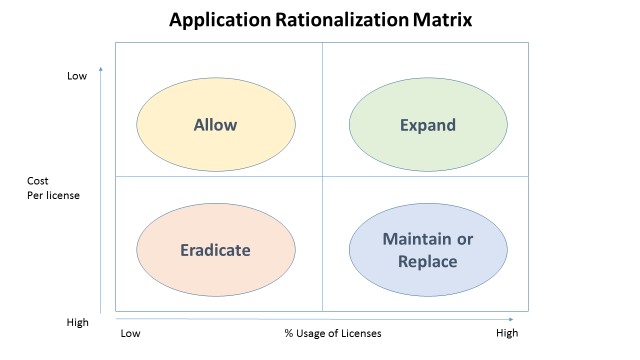To implement Application Rationalisation, one of the aspects to consider is the amount of time and resources such a project will require. Do you have the skills, never mind the time to do the work, and more importantly where do you start and how can you prioritise the workload. Our advice is to follow the Application Rationalisation Matrix.
The matrix helps you to prioritise the workload and separate software applications for rationalisation into the “vital few” and the “insignificant many”. To do this, you will follow a logical process to come up with the list of prime applications for rationalisation.
As with most projects of this type you will find that 80% of the savings will come from 20% of the applications. The following diagram shows a matrix of 4 different types of applications.

App Rationalization Matrix
The applications that have low percentage usage levels of licenses and high costs are prime candidates for significant cost reduction, whereas those with low costs and low usage levels can be tolerated and allowed to continue as they do not drain many resources. The applications that that have high percentage usage of licenses and a high cost per licenses are those that should be considered for replacement, but often they will be maintained. Any application that has a high percentage of usage of licenses and a low cost per licenses can be expanded without any concern.
To read more about Application Rationalization Whitepaper, please click here.